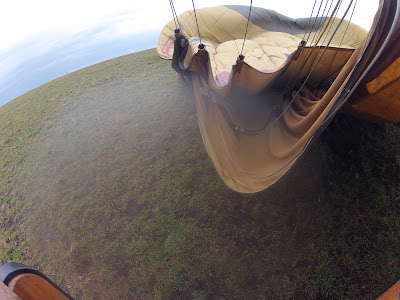On Emma and Pat's last day in the Mara, we headed down to Purungat Bridge to do a full site visit, so they could see all the things we normally collect and measure and provide advice. We had a pesky hippo hanging out right where we wanted to work, but after some negotiations, he agreed to move on downstream and let us spend some time in the river.
 |
| Emma and Pat by the Mara |
Both Emma and Pat are really knowledgeable about aquatic macroinvertebrates, so it was great to get their input on identification of different groups. Aquatic macroinvertebrates are small insects that spend at least part of their life underwater, and many of them are great indicators of the water quality in the system. Chris and I collected a lot of macroinvertebrates in the river from 2008-10 when we were studying how water quality changed with flow level. For my research now, I am mostly interested in using them as an indication of the degree to which hippo inputs are making their way up into the food chain.
 |
| Emma looking for macroinvertebrates in the river |
 |
| A Plecoptera, or stonefly, which indicates good water quality |
After two weeks in the field, lots of research, and over 1,000 km traveled over bumpy roads in our old Land Rover, it was nice to spend a day in Nairobi with Emma and Pat at the end of their visit. Nothing like a hot shower and a little "dawa" (Swahili for medicine and for a fabulous drink made with vodka, honey and lime) after a few weeks in the bush!
 |
| Drinking dawas at the Carnivore |
We are so grateful to Emma and Pat for coming to Kenya, helping out so much with our research, and being great guests! Asante sana na karibu tena (Thanks so much and welcome again)!













